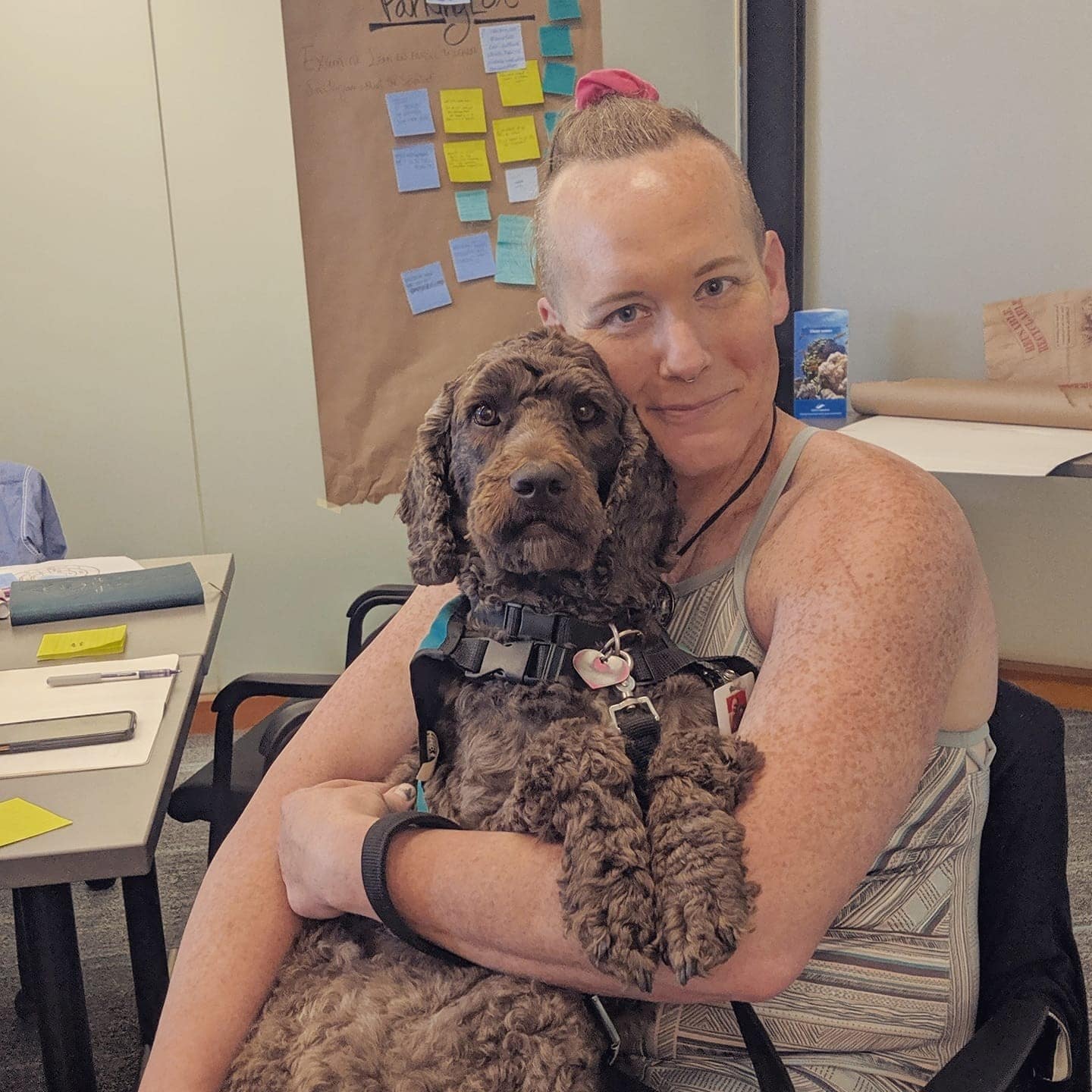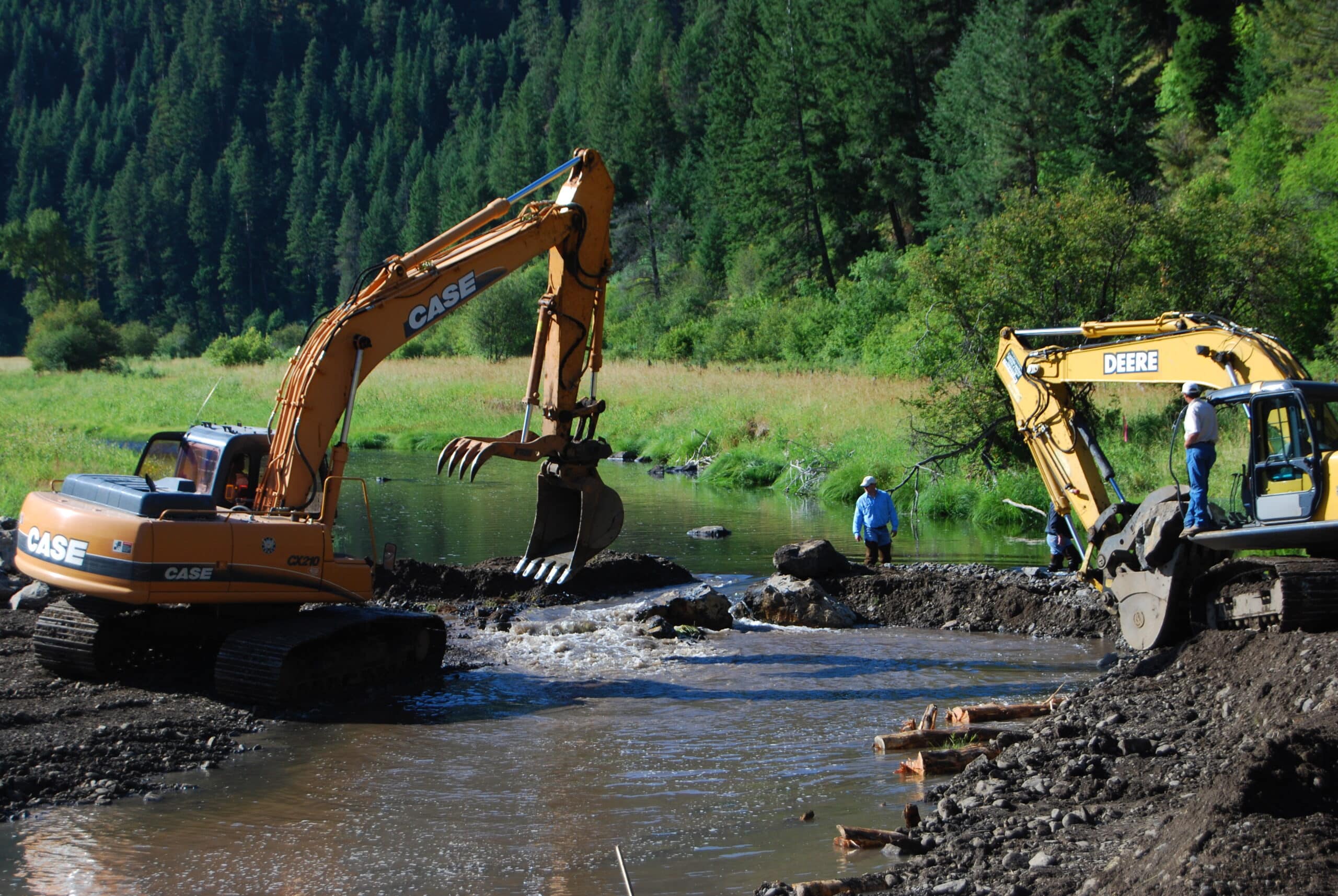Driving decisions with data and DAPPER Stats
Like many of us, some of Dr. Juniper Simonis’ fondest memories are summer camping trips with family.
“I got some really good opportunities to experience nature close to home but also to explore different parts of the country and see firsthand how variable the American landscape is,” they said.
Simonis (who uses they/them pronouns) grew up in Mundelein, a marshy area of lakes and wetlands sandwiched between the flat landscape of Illinois and the beginning of the rolling hills of Southern Wisconsin. After attending the University of Illinois, Simonis went on to earn a PhD in Ecology and Evolutionary Biology at Cornell.
“I trained in academic ecology, but have always been really interested in the applied side of things and helping people actually address problems that they have,” said Simonis.

Juniper and their dog Wallace.
Studying disease ecology helped them realize that a unique, varied skillset of statistics, computers, math, biology and field experience could fill a gap in the environmental field.
“There are any number of problems that make ecological and biological data very particular,” they said. “It’s hard for somebody who doesn’t sit at that interface but is really good at math, stats and computing to just plunk down in an applied biology setting and hit the ground running.”
After leaving a job at the Lincoln Park Zoo in Chicago, Simonis moved to Portland where they started DAPPER Stats, a company providing customized quantitative support for every stage of the research process in academic and applied settings.
“Somebody has a question and somebody has data, they just don’t know how the data can answer the question,” they said. “I do.”
That’s how Olivia Duren, TFT Riparian Ecologist, found DAPPER Stats, and since 2017, they’ve been working together to use TFT’s robust monitoring data to answer questions about restoration project performance, the factors driving it and efficient monitoring design.
Through our water quality trading programs, TFT works with partners who have compliance or mitigation obligations, such as a city, to offset the impacts of their operations. We offer natural infrastructure solutions for that mitigation, through restoration actions, such as planting streamside vegetation. These projects are then monitored to document that intended outcomes are achieved. For TFT’s contract with Idaho Power Company, DAPPER Stats did an independent, third-party review of how we collect and analyze our monitoring data.

In partnership with Idaho Power Company, TFT is replanting key tributaries while also deepening the main river channel and enhancing natural floodplains to improve water quality, velocity and fish habitat.
“They have gone through everything with a fine-toothed comb and confirmed that we’re doing it in a statistically robust way, so that we know all that time and energy that we’re investing in measuring the project conditions are being invested well and that we’re producing information that is valuable and that we can trust,” said Duren.
DAPPER Stats is also helping TFT develop a predictive, cost-benefit sampling design component to StreamBank, TFT’s proprietary program management application, that will help program administrators determine which restoration sites should be intensively monitored. As TFT’s projects are being monitored over multiple years in irregular intervals, DAPPER Stats is ensuring that practical constraints, such as personnel hours and the amount of resources, are balanced against the benefit that’s gained from doing quantitative monitoring at our sites.
“We’re making sure that the monitoring y’all are doing is representative,” said Simonis. “That going forward, the monitoring you’re doing is going to make a difference.”
In addition to the collaboration with TFT, DAPPER Stats works on a variety of projects across the West, including salmon migration in the Umatilla River and fish salvage studies in the Sacramento-San Joaquin basin.
“I get a lot of confidence in DAPPER Stats’ recommendations knowing that they do this kind of work for a variety of different projects, including academic researchers and other large-scale government projects,” said Duren. “They see a lot of different approaches and solutions, and are able to bring that perspective and awareness to their recommendations in a way that broadens the context beyond just the one particular thing that we’re working on. They’re better grounded in all of the options that are out there – not just the options that we have specifically considered – and that assures me that we really are making the right choices. Juniper is also really dedicated to clearly communicating very complex mathematical concepts – it’s empowering to understand the implications of our choices and make decisions collaboratively.”
DAPPER Stats continues to grow and recently hired their second employee.
“As a visibly queer and trans and invisibly disabled person, it’s hard for me to feel like I belong at a lot of companies, and that played a big part in me creating my own company,” said Simonis. “Now I’m getting to make some of those decisions and really trying to be as intentional as possible, especially in the moment we’re in right now as a society. In a lot of respects, there’s even more of a need to be intentional about the work that we do. I’m thinking about how I can best leverage my skills for good in a lot of ways.”
Check out more about DAPPER Stats at their website.
August 18, 2020#Idaho #Idaho Power #local partners #partner profile #partnership
Enjoying Streamside?
This is a space of insight and commentary on how people, business, data and technology shape and impact the world of water. Subscribe and stay up-to-date.
Subscribe- Year in Review: 2023 Highlights
By Ben Wyatt - Report: Leveraging Analytics & Funding for Restoration
By Joe Whitworth - Report: Transparency & Transformational Change
By Joe Whitworth - On-the-Ground Action – Made Possible By You
By Haley Walker - A Report Representing Momentum
By Joe Whitworth

